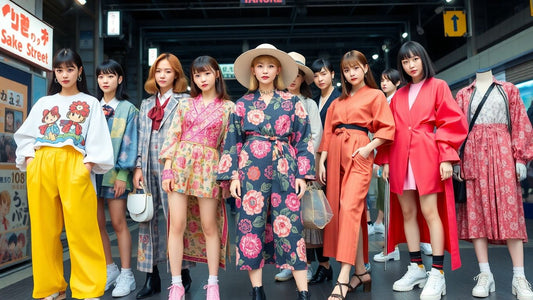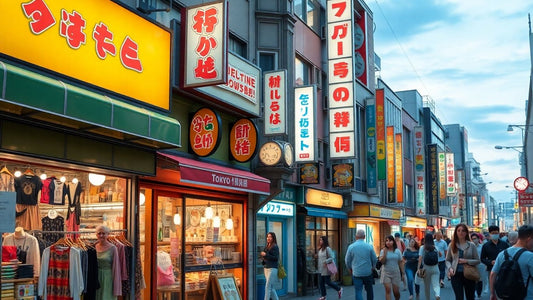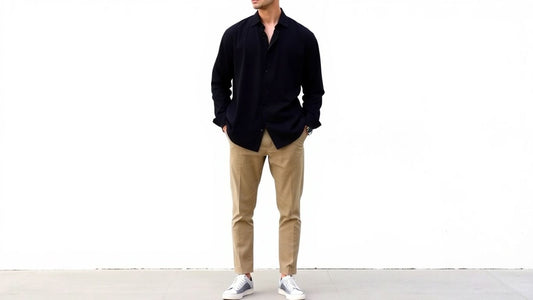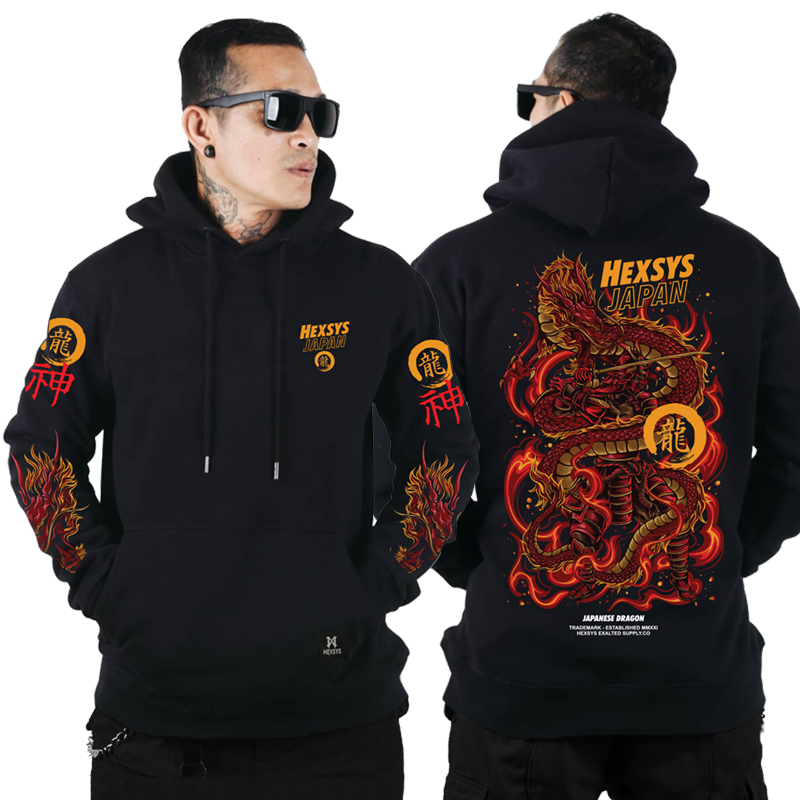
How to Find the Best Japanese Style Clothes Store Online in 2025
Shopping for Japanese style clothes online can feel like searching for hidden treasure. There are so many store types, different brands, and unique trends that it’s easy to get lost. Whether you’re after affordable basics, bold Harajuku looks, or high-end designer pieces, the internet is packed with choices. If you want to find the best Japanese style clothes store in 2025, you’ll need to know what to look for, how to spot the real deal, and how to snag a bargain. Let’s break it down so your next online shopping trip is a lot less confusing—and maybe even fun.
Key Takeaways
- Japanese style clothes stores come in a few types: affordable brands, select shops with lots of labels, and designer boutiques.
- Sizing is different in Japan—clothes often run smaller, so always check the size chart before buying.
- Look for trusted online stores with good reviews and clear return policies, especially if you’re shopping from outside Japan.
- Sales happen at certain times of year, like January and July, and that’s when you’ll find the best deals.
- Some stores offer tax-free shopping, outlet sections, and special discounts for members—so it pays to do a little digging.
Understanding Different Japanese Style Clothes Store Types
Japanese fashion isn’t just about kimonos or the latest Tokyo streetwear. If you’re looking for Japanese style clothes stores online in 2025, it helps to know the types of shops you’ll find. Each serves a different need—some offer accessible basics and others curate high-end brands. Here’s a breakdown of the main categories you’ll see, and how they’re different.
Key Features of Select Shops
Select shops, known locally as "セレクトショップ," stand out because they offer clothes from multiple brands—including international labels and their own original pieces. Think of them as highly curated mini department stores for trend-focused shoppers.
- You’ll likely see new or hard-to-find brands showcased with unique combinations put together by knowledgeable staff.
- Prices here tend to be mid-to-high, reflecting the broader selection and curation.
- Examples include BEAMS, United Arrows, and Journal Standard—each with a mix of Western influences and local design.
| Select Shop | Typical Price Range | Focus |
|---|---|---|
| BEAMS | $50–$400 | American/Japanese |
| United Arrows | $60–$500 | Modern/Luxe Mix |
| Journal Standard | $40–$350 | Everyday Contemporary |
A select shop is perfect for anyone bored of mainstream mall brands and wanting a surprise mix of global and Japanese fashion in one place.
Petit-Pura Fashion Explained
Petit-pura (“petit price”) stores in Japan specialize in affordable clothes—think basics, trendy pieces, and practical daily wear. These outlets have blown up thanks to their prices and accessibility.
- Widely loved by students and young professionals looking for easy, wallet-friendly updates for their closets.
- The focus is less on flashy statements and more on functionality and value.
- Best known examples: UNIQLO, GU, Shimamura, and Honeys—all have robust online shops with clear international shipping.
A few things to remember if you’re shopping petit-pura:
- Stock rotates quickly, especially for seasonal trends.
- Sizing may run smaller than Western brands—always check measurements.
- Great way to get a taste of Japanese style without dropping a ton of cash.
How Designer Boutiques Differ
Now, when you hit the world of Japanese designer stores, things change quite a bit. Here, exclusivity, unique fabrication, and bold design are priorities. These boutiques carry homegrown labels and cult favorites that often set global trends.
- Expect limited-edition drops, collaborations, and clothes that look and feel one-of-a-kind.
- Shopping here means you’re paying for craftsmanship, brand story, and status.
- Tokyo Fashion Week labels and legends like Comme des Garçons, Sacai, and Visvim fill this space.
What makes designer boutiques stand out?
- Lower stock, but higher uniqueness per item.
- Staff can provide styling advice and insight into the pieces—sometimes even arrange exclusive online previews.
- It’s common for fans to follow specific designers and queue for new releases.
Whether you want basics, curated style, or statement pieces, understanding these store types makes online Japanese fashion shopping in 2025 a lot less overwhelming.
Top Japanese Style Clothes Stores to Explore Online

Want to step up your wardrobe with genuine Japanese style? Here are the top online destinations, each one known for something different—from everyday basics to rare, niche styles. Depending on your taste and budget, there's a virtual storefront waiting for you.
Famous Affordable Brands Like UNIQLO and GU
For most shoppers, these names probably ring a bell right away, and for good reason:
- UNIQLO: Known for basics, clean design, and functional tech-fabric (like HEATTECH or AIRism). Prices are reasonable and fit is consistent. They ship globally and offer easy returns in many regions.
- GU: UNIQLO’s more playful, youthful cousin. Trendy items drop regularly but at even lower prices. Think of it for tees, casual pants, and statement pieces that won’t stretch your wallet.
- MUJI: Famous for minimalism. Their soft organic cotton, relaxed silhouettes, and neutral color palette appeal to anyone looking for understated style. Shipping options for most countries.
If you’re just branching out into Japanese fashion, start with the affordable brands—they’re risk-free and surprisingly versatile, making them a perfect entry point.
Select Stores With Global Presence
Online select shops mix brands and styles under one (digital) roof, letting you discover unique edits from Japan’s own scene. A few of the big names:
- BEAMS: A pioneer in select shopping, started in Harajuku and known for mixing American street style with Japanese craftsmanship. Lots of imported and homegrown labels, regularly updated stock.
- United Arrows: Offers everything from casual to formal, often collaborating with big international names. The focus here is refinement but with a creative twist.
- Journal Standard: Blends American-influenced casual wear with high-quality materials. And if you want something youthful or university-chic, you’ll find plenty of options here.
| Store Name | Specialty | International Shipping |
|---|---|---|
| BEAMS | Street & casual, multi-brand | Yes |
| United Arrows | Classic & collaborative pieces | Yes |
| Journal Standard | Casual, youthful, high-quality | Limited |
Spotlight on Unique Harajuku and Street Fashion Retailers
If you want to try bold prints, wild layering, or keep up with Tokyo’s latest street trends, check out:
- WEGO: Harajuku’s go-to for students and young adults. Big on graphic tees, playful collabs, and fast-changing inventory. Affordable and all about having fun with fashion.
- Shimamura: Huge in Japan for family fashion but a treasure trove for character collabs (think anime-themed tees and accessories).
- Zozotown: The top online fashion mall in Japan. It carries everything from niche cult labels to mainstream brands. With bilingual support and international shipping options growing, Zozotown is perfect for discovering what’s hot right now.
High-End Designer Labels and Cult Favorites
For those who crave exclusivity, unique shapes, or cutting-edge textile work, Japanese high fashion is hard to beat:
- Comme des Garçons: Avant-garde pieces. Play with construction and break the rules—often at investment-level prices.
- Sacai: Known for hybrid, transformable silhouettes and unexpected combinations.
- Visvim: A cult label blending old-school technique with modern fits and American influences. The price is steep, but enthusiasts swear by the details.
- Maison Mihara Yasuhiro & Anrealage: These names shine for anyone chasing something rare or experimental.
| Label | Signature Styles | Online Availability |
|---|---|---|
| Comme des Garçons | Experimental, deconstructed | SSENSE, own site |
| Sacai | Transformative, hybrid garments | Farfetch, own site |
| Visvim | Craft, workwear-inspired | Select global retailers |
Don’t be afraid to browse stores outside your comfort zone—Japan’s fashion scene values the unexpected, and sometimes the best pieces come from trying something totally new.
Tips for Navigating Japanese Online Fashion Shopping
When you're looking at Japanese fashion online, there's a good chance you'll run into unique platforms, sizing oddities, and tax quirks you don't see at home. Let's break it down by the stuff that confuses most folks the first time they go shopping for Japanese clothes on the internet.
Choosing the Right Platform and Store
Not all Japanese stores are built the same. Some focus on one trendy label, others mix up new and classic brands. It's honestly kind of fun to see the differences in approach—and prices.
- Check if the store is a global retailer or mainly serves the Japanese domestic market. Global platforms will usually have English support and smoother overseas shipping.
- Read up on shipping policies. Some stores handle the export process themselves, others make you use a proxy service—like buying Y2K fashion from Remambo.
- Take a minute to search store reviews and see what other shoppers say about authenticity, delays, and packaging.
One thing I've learned: a smooth shopping experience comes from picking the right platform at the start. Otherwise, you'll be lost in translation emails or looking up random addresses in Tokyo.
Understanding Sizing and Fit Differences
Japanese sizing isn't the same as most Western or European sizing, and it can trip up even seasoned shoppers. Fits can be up to two sizes smaller than what you expect. Don't worry—here's how to stay on track.
Always check the store's sizing chart before buying. Brands often include detailed measurements for chest, waist, and height in centimeters.
| US Size | Japan Size | Typical Bust (cm) | Typical Waist (cm) |
|---|---|---|---|
| S | M | ~80-85 | ~60-65 |
| M | L | ~86-90 | ~66-70 |
| L | XL | ~91-96 | ~71-76 |
- Japanese clothing leans toward slim and tailored, and the culture loves layers—so jackets and sweaters might be wider or roomier than you expect.
- If you’re unsure, size up or look for "overseas versions" (sometimes labeled 'International Fit').
- Pay attention to sleeve and leg lengths if you’re taller than average. Many brands list these lengths in their product info.
Shipping, Returns, and Tax-Free Offers
Shopping from overseas sounds simple, but Japanese sites each have their own rules for shipping and returns. Some don't accept international returns at all. And—bonus for travelers—there's a chance to shop tax-free if you qualify.
- Shipping options: Some retailers ship directly, but if not, you can use a reshipping service or a proxy service.
- Returns: Double-check if returns are allowed from your country. Many Japanese stores don't accept international returns, or they'll make you pay return shipping.
- Tax-free: If you're traveling in Japan, ask about the tax refund process for international visitors. Online, some shops let overseas shoppers skip the 10% domestic consumption tax, too.
I've found that double-checking shipping costs and return options before you check out is way better than being surprised by huge fees later.
Shopping for Japanese fashion online isn’t that hard once you get the hang of these basics. Next time you’re scrolling for something unique, keep these tips handy—and take a second look at those sizes before you click buy!
Latest Trends in Japanese Style Clothes Store Offerings
Japanese fashion always seems to come up with something unexpected, and in 2025, stores are going beyond the usual. They're blending real traditions with new technology and catching eyes worldwide thanks to cool anime collaborations. If you’re keeping an eye out for something new, here’s what’s buzzing right now:
Hybrid Street and Traditional Aesthetic
Stores are mixing old-school style with today’s street looks like never before. You’ll see kimono patterns reimagined on bomber jackets or geta shoe-inspired sneakers popping up in limited drops. It isn’t rare to find patchwork haori jackets paired with graphic tees or modern takes on hakama pants. Look out for these:
- Tees with ukiyo-e art prints
- Denim jackets with sashiko embroidery
- Varsity jackets remixed with kimono brocade sleeves
Sometimes, you spot these mixed styles and think it won’t work, but Japanese brands pull it off effortlessly, making tradition feel fresh again.
Fashion-Technology Innovations
In the past few years, fashion tech has moved from runways into the average Japanese store. Some pieces now have UV protection, digital color-changing fabrics, or pocket chargers built right in. There’s a real push for wearable tech that doesn’t scream ‘tech’, but looks subtle:
| Tech Feature | Where to Find It | Everyday Use |
|---|---|---|
| UV-Shield Fabrics | UNIQLO, GU, and select shops | Outdoor summer wear |
| Built-In Wireless Charging Pockets | High-end boutique lines | Commuters, travelers |
| Smart Textiles (e.g., self-cooling) | Designer labels | Hot weather, active folks |
Anime and Pop Culture Collaborations
It feels like every month there’s another splashy launch between a streetwear label and some beloved anime. These aren’t kids' novelty shirts either—they’re properly designed, limited collections with real fan attention:
- Special capsule lines featuring characters from Demon Slayer or Jujutsu Kaisen
- Sneakers inspired by Studio Ghibli movies
- Accessories and bags with famous manga panels
When you see a new pop culture drop online, items go fast and resale prices can skyrocket. Fans practically count down to launch days.
Japanese stores in 2025 are all about fusing wild creativity and thoughtful detail, so shopping feels anything but stale.
How to Identify Authentic Japanese Fashion Online
Shopping for Japanese style clothes online can be amazing, but with the sheer number of sites and brands out there, spotting what’s truly authentic gets tricky. Here’s how you can reliably separate genuine Japanese fashion from the rest of the pack.
Evaluating Brand Reputation and Reviews
Start by checking up on the brand’s reputation before anything else. There’s a huge difference between a buzzworthy designer and a pop-up copycat shop. Here’s how you can dig deeper:
- Research the brand’s history and founder details. Major houses and cult designers often have a pretty solid backstory or unique vision, which you can spot through designer guides like notable Japanese fashion brands.
- Look up buyer reviews on third-party forums and shopping platforms (not just the official site).
- Google the brand name with keywords like “review,” “scam,” or “fake” to spot any red flags.
If a retailer has tons of negative feedback, or you can’t track down any evidence they exist outside of a new Instagram page, it’s safer to skip them.
Spotting Quality Through Materials and Craftsmanship
Not all Japanese-inspired clothing online is made equal. Quality markers make a difference:
- Check product descriptions for fabric details (Japanese labels often use distinctive materials such as premium cotton, indigo-dyed denim, or innovative synthetics).
- Look for clear close-up photos showing precise stitching, clean finishing, and buttons/zippers that don’t look like afterthoughts.
- Read up on the return policy—brands confident in their quality usually allow for exchanges or returns.
| Quality Factor | What to Look For | Signs to Avoid |
|---|---|---|
| Material | Specific fabrics, origin listed | Generic/polyester only |
| Stitching/Finish | Clean, minimal stray threads | Uneven or messy seams |
| Product Description | Detailed, with care tags info | Vague or missing info |
Any brand worth checking out will spotlight their fabric choices, share up-close photos, and let you see the inside of a garment as easily as the outside. Don’t just trust product photos on white backgrounds—they should show unique features that set Japanese clothes apart.
Trusted Sites for International Shoppers
When buying from abroad, the online shop itself matters just as much as the brand. The most reliable global stores often:
- Offer multi-language support and international checkout.
- Share transparent shipping and customs fee details up front.
- Highlight partnerships with Japanese brands or have official status as authorized stockists.
A few extra tips:
- Avoid shops that only accept untraceable payments (e.g., wire transfer or crypto).
- Stick with sites that feature a clear business address and contact info.
- Registered stores on major Japanese online malls such as Zozotown, or well-known platforms like SSENSE, are generally safer bets for authentic goods.
Authentic Japanese fashion online is usually bold, sometimes quirky, and nearly always carries a distinct sense of care in the details—if something feels off, it probably is. Carefully checking reputation, craftsmanship, and the store itself helps you skip the fakes and score something you’ll actually want to wear.
Saving Money When Shopping at a Japanese Style Clothes Store

Timing Purchases Around Japanese Sales Periods
One of the easiest ways to save is by shopping during big sale events. Japanese stores often hold major sales twice a year: in winter and summer. If you plan your purchases for these months, you can score some surprisingly good bargains. For example, winter sales typically start in December or early January, bringing the famous fukubukuro (lucky bag) deals where you get a mystery bag of goods at a huge discount. Summer sales usually peak from late June into July. Besides those, spring specials pop up during Golden Week.
| Sale Event | Typical Dates | Discounts |
|---|---|---|
| Winter Sales | Dec – Early Jan | 30–70% off |
| Summer Sales | Late June – July | 20–60% off |
| Golden Week | Late April – Early May | Varies by store |
| Fukubukuro (Lucky Bags) | First week of Jan | Value often doubles price |
Staying patient and waiting for these sale windows can make your fashion budget go much further, even if you’re just browsing online from abroad - affordable shopping opportunities in Japan aren’t as rare as you might think.
Tips for Finding Outlet and Discount Items
It’s not just about shopping during sales—outlet shopping is a whole other game. Many brands operate online outlet shops year-round with previous-season items or unsold stock. Here’s how you can make the most of these outlets:
- Check the official websites for their outlet or "sale" sections regularly.
- Consider off-brand or lesser-known retailers who quietly discount items without big announcements.
- Join fashion forums or follow Japanese shopping news on social media for heads-up on flash sales.
A good tip is to set up notifications for your favorite stores so you don’t miss sudden price drops. And don't forget, sometimes smaller select shops will clear out inventory between major seasons, even without publicizing it much.
Memberships, Coupons, and Special Campaigns
Sign up for newsletters or store memberships whenever possible—lots of Japanese fashion sites offer points programs, members-only discounts, or coupons with your first order. Here are some easy things you can do right away:
- Register for free memberships and use the welcome coupon on your first purchase.
- Subscribe to email alerts for coupon codes or limited-time offers.
- Collect points through purchases—after a few orders, you might earn credits or gift vouchers.
- Watch out for collaboration events or anniversary celebrations, which often come with extra savings.
Even if you’re buying from abroad, don’t skip joining membership programs; international customers often get bonus perks, and sometimes there are tax-free deals or shipping discounts, making your favorite Japanese style just a little bit cheaper.
Conclusion
So, that’s pretty much the rundown on finding the best Japanese style clothes store online in 2025. There’s a lot out there, from big names like UNIQLO and GU to smaller, trendier select shops and designer labels. The cool thing is, you don’t have to be in Tokyo or Osaka to get your hands on these styles anymore—most shops have online stores, and some even offer video calls to help you pick out the right fit. Just remember, sizing can be different, so double-check those charts before you order. Whether you’re after affordable basics, something unique from a select shop, or a statement piece from a designer, there’s something for everyone. Take your time, explore a few different sites, and don’t be afraid to try something new. Japanese fashion is all about mixing things up and having fun with your look, so enjoy the process!
Frequently Asked Questions
What is a select shop in Japanese fashion?
A select shop in Japan is a store that sells clothes from different brands, not just their own. It’s like a smaller department store where you can find a mix of styles and brands all in one place. These shops are great for discovering new trends and getting inspired by how items are put together.
How do Japanese clothing sizes compare to US or European sizes?
Japanese clothing sizes are usually smaller than US or European sizes. Sometimes, a Japanese size large might fit like a medium or even a small in the US. Always check the size chart before buying, and measure yourself to make sure you get the right fit.
Are there affordable Japanese fashion brands for students?
Yes! Brands like UNIQLO, GU, and Shimamura are known for their low prices and good quality. They’re especially popular with students and families because you can find trendy and basic clothes without spending a lot of money.
How can I tell if a Japanese fashion store online is trustworthy?
Look for stores with lots of good reviews and clear information about their products. Trusted sites usually have secure payment options and easy-to-find contact details. You can also check if the store is listed on well-known shopping platforms or has been recommended by fashion blogs.
What should I know about shipping and returns when buying from Japan?
Shipping from Japan can take longer and may cost more, especially if you live far away. Some stores offer international shipping and even tax-free deals for overseas buyers. Make sure to read the return policy, as some Japanese stores don’t allow returns, or they might have special rules for international customers.
When is the best time to shop for discounts at Japanese stores?
The best times to find sales are in January and July, when stores have big winter and summer sales. There are also special deals during Golden Week in spring. Some stores have outlet sections online or offer coupons and membership discounts, so keep an eye out for those too.


















